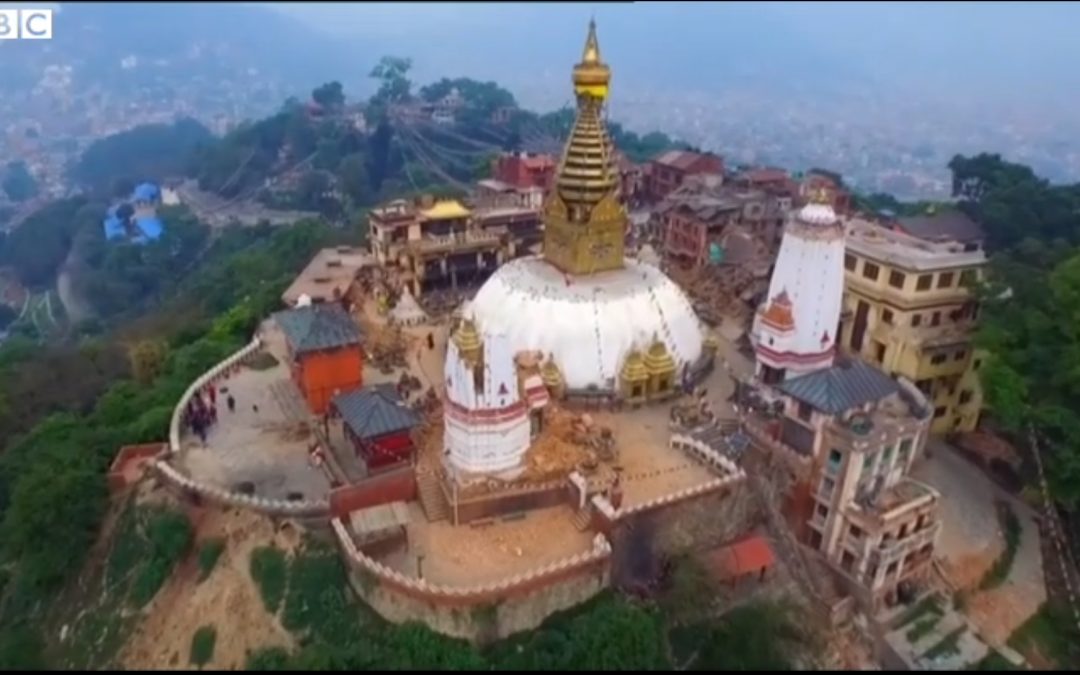By Robin Ewing
This drone footage of Kathmandu does an incredible job of showing the scale of damage done by Saturday’s earthquake in Nepal. The only other way to get these kinds of images would be to hire a helicopter.
Drone journalism is up and running, or I should say, flying.
The BBC seems to be leading with its souped up mega drones. They have three big ones called hexacopters with six propellers and skis for legs. (The BBC prefers the term “flying camera.”) Here’s some haunting BBC drone footage from the Auschwitz-Birkenau concentration camp in Poland, where Nazis killed more than 1 million Jews in WWII. And last year, the BBC produced this project called Soccer Cities in Brazil just before the World Cup.
Drone journalism is suited for disaster coverage. Telegraph photographer Lewis Whyld got some drone footage of The Philippines in the aftermath of the Typhoon Haiyan.
And a 6-month later follow up here.
But when it comes to covering crowds, the rules are different. In the US, no one, journalists included, are allowed to fly drones over crowds, or we might see some interesting footage out of Baltimore right now. Journalists can get around those rules in other countries. In 2013, the BBC used a drone to get footage of a Thai protest. Last year, Ruptly, a video news agency in Berlin, filmed protestors in Kiev (warning: terribly grating audio).
And of course, there was plenty of drone footage of the Occupy Central movement in Hong Kong in the fall.
Journalists keep getting in trouble for flying drones where they aren’t supposed to. In February, three journalists from Al-Jazeera got arrested for flying a drone in Paris.The month before, BBC journalists got stopped by Swiss police after they sent a drone into a no-fly zone at the World Economic Forum. A photojournalist was arrested for flying a drone near Gatwick airport in December. Last month, a Mother Jones reporter was arrested for trespassing on a Louisiana prison with a drone camera in his possession. Last year, a man threatening to jump off a building in Cape Town almost fell when a media drone came zooming at him. Those journalists were arrested. And even the students at the Drone Journalism Lab at the University of Nebraska-Lincoln filming the drought and at the University of Missouri Drone Journalism Program both got told by the FAA to stop in 2013.
In the US, the Federal Aviation Administration published a “notice of proposed rule making” that has journalists at the Nieman Lab optimistic, despite the long list of potential restrictions, which are viewed as better then no drones at all. The government was accepting comments on this NPRM until a few days ago, but the comment button still seems to be working. And CNN worked out an agreement with the FAA early this year to test journalism drones.
Here’s an extensive list by the Missouri Drone Journalism Program explaining drone rules in different countries. Australia and New Zealand seem to be the most unregulated, despite the police investigation of Australia’s 60 Minutes TV program flying a drone over an immigration detention camp.
In Hong Kong, the government has published a rule list for drones, including not flying within 50 meters of a person, boat, car or building and keeping the drone within sight of the operator at all times. It also can’t go higher than 300 feet (funny how Hong Kong uses meters in one rule and feet in another).
Here’s a completely legal video in Hong Kong that took months to plan and delivers a chocolate bar.

